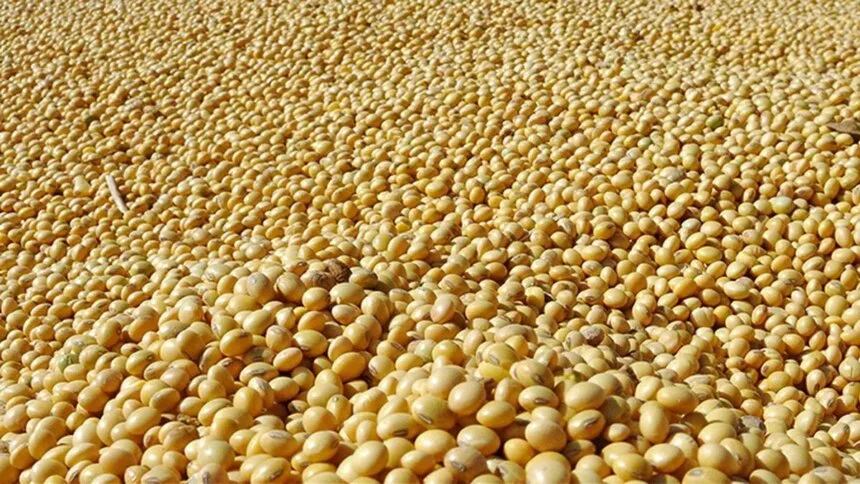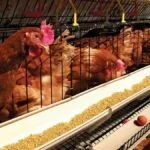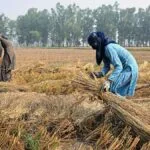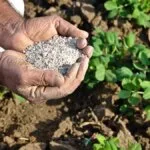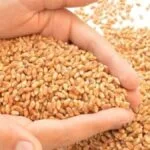Main Points In Hindi (मुख्य बातें – हिंदी में)
यहाँ पर लेख के मुख्य बिंदुओं का संक्षेप में वर्णन किया गया है:
-
खरीफ फसलों की उत्पादन संभावनाएँ: पिछले 30 दिनों की कृषि बाजार यार्ड (मंडियों) की कीमतों से संकेत मिलता है कि सोयाबीन, मूंगफली, ज्वार और नाइजर का उत्पादन पिछले वर्ष की तुलना में अधिक हो सकता है, जबकि तुअर की फसल में गिरावट देखी जा सकती है।
-
सरकारी अनुमान में देरी: सरकार ने खरीफ फसलों के उत्पादन के पहले अग्रिम अनुमान को जारी करने में देरी की है, जो सामान्यतः सितंबर में घोषित किया जाना चाहिए था।
-
कपास की कीमतों में कमी: कपास की कीमतें पिछले 30 दिनों में थोड़ी कम हुई हैं, जबकि वर्ष 2023-24 में कपास का बुआई क्षेत्र बढ़ा है।
-
राज्य स्तर पर उत्पादन अनुमान: राजस्थान ने पहले ही कई खरीफ फसलों के उत्पादन का अपना पहला अनुमान जारी कर दिया है, जिसमें विभिन्न फसलों के उत्पादन के आंकड़े शामिल हैं।
- व्यापार समुदाय की भूमिका: व्यापारी क्षेत्र में फसलों के उत्पादन के बारे में अनुमान लगाने में महत्वपूर्ण भूमिका निभाते हैं, और वे सरकारी अनुमानों का बेसब्री से इंतजार करते हैं।
Main Points In English(मुख्य बातें – अंग्रेज़ी में)
Here are the main points from the article regarding agricultural market trends:


-
Price Trends Indicating Higher Production: Recent market prices suggest that the production of four Kharif crops (soybean, groundnut, jowar, and niger) may be higher this year compared to last year, while the production of tuar may see a decline.
-
Stable Production Levels for Other Crops: The production levels for crops such as rice, maize, millet, and ragi are expected to remain around last year’s levels, according to market indicators.
-
Government Report Delays: The government has delayed the release of its initial production estimates for Kharif crops, which are typically announced in September.
-
Cotton Prices Decline Despite Lower Area: Despite a reduction in the area under cotton, prices have seen a slight decline in the last 30 days, with current average prices at ₹6,993 per quintal.
- State-Level Estimates: Rajasthan has already released its preliminary production estimates for several crops, indicating significant figures for millet, moong, maize, and groundnut, highlighting state-level agricultural output trends.
Complete News In Hindi(पूरी खबर – हिंदी में)
पिछले 30 दिनों में कृषि बाजार यार्ड (मंडियों) में कीमतें संकेत देती हैं कि कम से कम चार खरीफ फसलों – सोयाबीन, मूंगफली, ज्वार और नाइजर का उत्पादन पिछले साल की तुलना में अधिक हो सकता है, जबकि तुअर की फसल में गिरावट हो सकती है। उड़द, मूंग, सूरजमुखी और तिल। चावल, मक्का, बाजरा और रागी का उत्पादन पिछले साल के स्तर के आसपास हो सकता है, जैसा कि बाजार दरों से संकेत मिलता है। सरकार ने ख़रीफ़ फ़सलों के उत्पादन अनुमान जारी करने में देरी की है, जिसकी घोषणा आमतौर पर सितंबर में की जाती है।
2023 ख़रीफ़ सीज़न में, उत्पादन इस प्रकार था: चावल, 113.26 मिलियन टन (mt); मक्का, 22.25 मीट्रिक टन; बाजरा, 9.66 मीट्रिक टन; ज्वार, 1.51 मिलियन टन; रागी, 1.67 मिलियन टन; अरहर, 3.42 मिलियन टन; उड़द, 1.60 मीट्रिक टन; मूंग, 1.15 मीट्रिक टन; मूंगफली, 8.66 मिलियन टन; सोयाबीन, 13.06 मीट्रिक टन; सूरजमुखी, 0.06 मीट्रिक टन; तिल, 0.40 मीट्रिक टन; और नाइजर, 0.03 मिलियन टन।
कपास, जिसकी 2023-24 में 170 किलोग्राम की 32.52 मिलियन गांठें थीं, एकमात्र ऐसी फसल लगती है जिसकी कीमतें कम रकबा के बावजूद पिछले 30 दिनों में थोड़ी कम हुई हैं। नवीनतम आंकड़ों से पता चलता है कि कपास (मध्यम) वर्तमान में मंडियों में औसतन ₹6,993/क्विंटल पर बेचा जाता है, जो अक्टूबर में ₹7,134/क्विंटल के औसत से थोड़ा कम है।
-
यह भी पढ़ें: अप्रैल-सितंबर में उर्वरक सब्सिडी भुगतान में गिरावट
इस वर्ष कपास का बुआई क्षेत्र लगभग 113 लाख हेक्टेयर दर्ज किया गया, जो 2023 में 12.7 लाख हेक्टेयर था।
कृषि मंत्रालय ने 20 सितंबर को कहा था कि खरीफ फसलों के उत्पादन का पहला अग्रिम अनुमान अक्टूबर में जारी किया जाएगा. मंत्रालय ने क्रिसिल रिसर्च, एग्रीवॉच, इंडिया पल्सेस एंड ग्रेन एसोसिएशन (आईपीजीए), इंडियन ऑयलसीड एंड प्रोड्यूस एक्सपोर्ट प्रमोशन काउंसिल (आईओपीईपीसी), इंडियन शुगर मिल्स एसोसिएशन (आईएसएमए), कॉटन कॉरपोरेशन ऑफ के उद्योग विशेषज्ञों के साथ खरीफ फसलों की संभावना पर भी चर्चा की थी। भारत (सीसीआई), और आईसीएआर के कई अनुसंधान संस्थान।
“इस परामर्श का प्राथमिक उद्देश्य खरीफ 2024 सीज़न के लिए फसलों के वर्तमान उत्पादन दृष्टिकोण के संबंध में हितधारकों से महत्वपूर्ण अंतर्दृष्टि और प्रारंभिक आकलन एकत्र करना था। ये योगदान इन कृषि फसलों के पहले अग्रिम अनुमान तैयार करने में अभिन्न अंग होंगे, ”मंत्रालय ने परामर्श के बाद कहा था।
“व्यापार किसी फसल की नब्ज जानता है, चाहे उत्पादन कम होगा या अधिक, भले ही यह सटीक न हो। निजी व्यापारी और उद्योग हमेशा विशेष रूप से कई राज्यों में उगाई जाने वाली फसलों के लिए सरकारी अनुमानों की प्रतीक्षा करते हैं। अरहर या मूंग जैसी फसल का अनुमान लगाना आसान है क्योंकि यह 2-3 राज्यों में प्रमुखता से उगाई जाती है, ”40 से अधिक वर्षों के अनुभव वाले व्यापारी वीके जैन ने कहा।
राजस्थान, जो भारत में कई फसलों के शीर्ष तीन उत्पादकों में से एक है, ने उत्पादन का अपना पहला अनुमान पहले ही जारी कर दिया है। राज्य सरकार के आंकड़ों के अनुसार, बाजरा का उत्पादन 4.9 मिलियन टन, मूंग का 2.28 मिलियन टन, मक्का का 2.34 मिलियन टन, ज्वार का 0.62 मिलियन टन, उड़द का 0.2 मिलियन टन, मूंगफली का 2.27 मिलियन टन, सोयाबीन का 1.42 मिलियन टन, अरंडी का 0.3 मिलियन टन और तिल 88,379 टन।
Complete News In English(पूरी खबर – अंग्रेज़ी में)
In the past 30 days, the prices in agricultural markets (mandis) indicate that the production of at least four kharif crops—soybean, peanuts, jowar, and niger—may be higher than last year, while there could be a decline in the production of tur, urad, moong, sunflower, and sesame. The production levels for rice, maize, millet, and ragi seem to be similar to last year’s figures, based on market rates. The government has delayed announcing its estimates for kharif crop production, which are usually released in September.
For the 2023 kharif season, the estimated production was as follows: rice at 113.26 million tons; maize at 22.25 million tons; millet at 9.66 million tons; jowar at 1.51 million tons; ragi at 1.67 million tons; tur at 3.42 million tons; urad at 1.60 million tons; moong at 1.15 million tons; peanuts at 8.66 million tons; soybean at 13.06 million tons; sunflower at 0.06 million tons; sesame at 0.40 million tons; and niger at 0.03 million tons.


Cotton, which produced 32.52 million bales weighing 170 kg each in 2023-24, is the only crop that has seen a slight decrease in prices despite a smaller area under cultivation. Current averages show that medium-grade cotton is being sold at ₹6,993 per quintal in the markets, down from ₹7,134 per quintal in October.
This year, cotton was planted on about 11.3 million hectares, compared to 12.7 million hectares in 2023. The Agriculture Ministry announced that the first advance estimate for kharif crop production would be released in October. The ministry consulted with industry experts from various organizations to discuss the prospects for kharif crops.
The primary goal of these consultations was to gather insights and preliminary assessments regarding the current production outlook for the kharif 2024 season. These inputs will be essential for creating the first advance estimates of agricultural production.
Traders, with extensive experience, also noted that they have a good sense of production levels of various crops, even if these estimates are not entirely accurate. For crops like tur or moong, which are primarily grown in only a few states, making production estimates is relatively straightforward.
Rajasthan, a key producer of several crops in India, has already released its first production estimate, indicating the following outputs: millet at 4.9 million tons, moong at 2.28 million tons, maize at 2.34 million tons, jowar at 0.62 million tons, urad at 0.2 million tons, peanuts at 2.27 million tons, soybean at 1.42 million tons, castor at 0.3 million tons, and sesame at 88,379 tons.
Source link


 By
By 